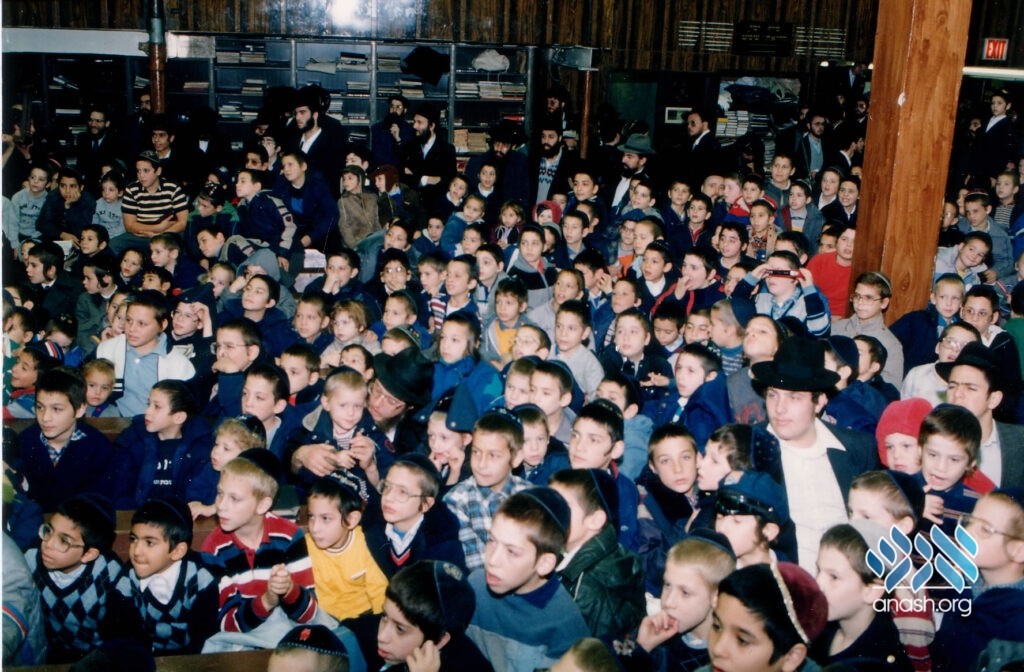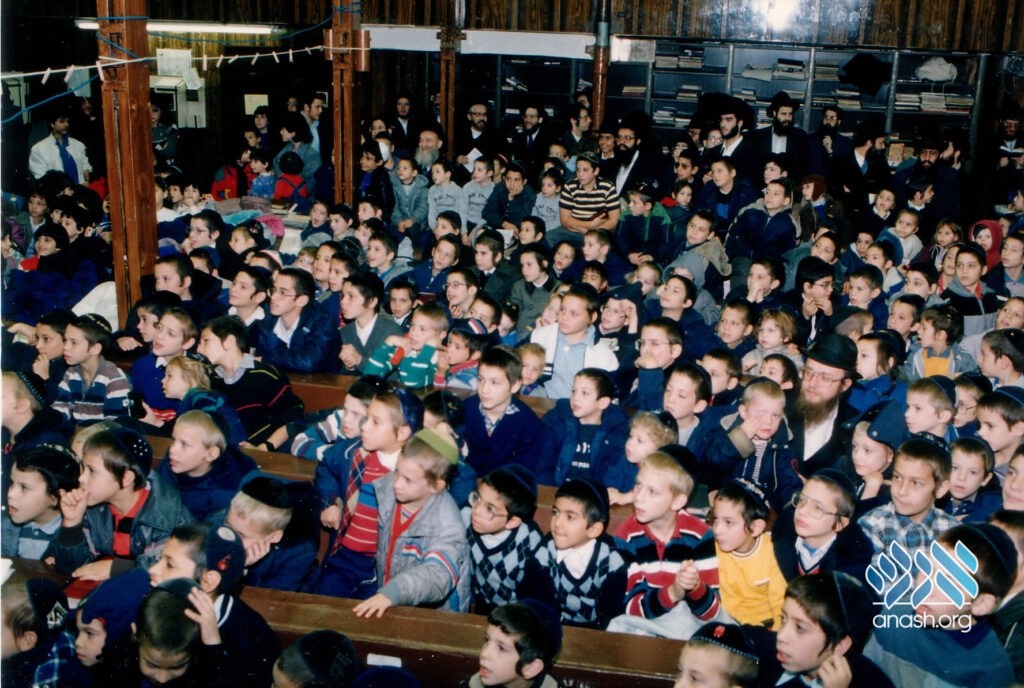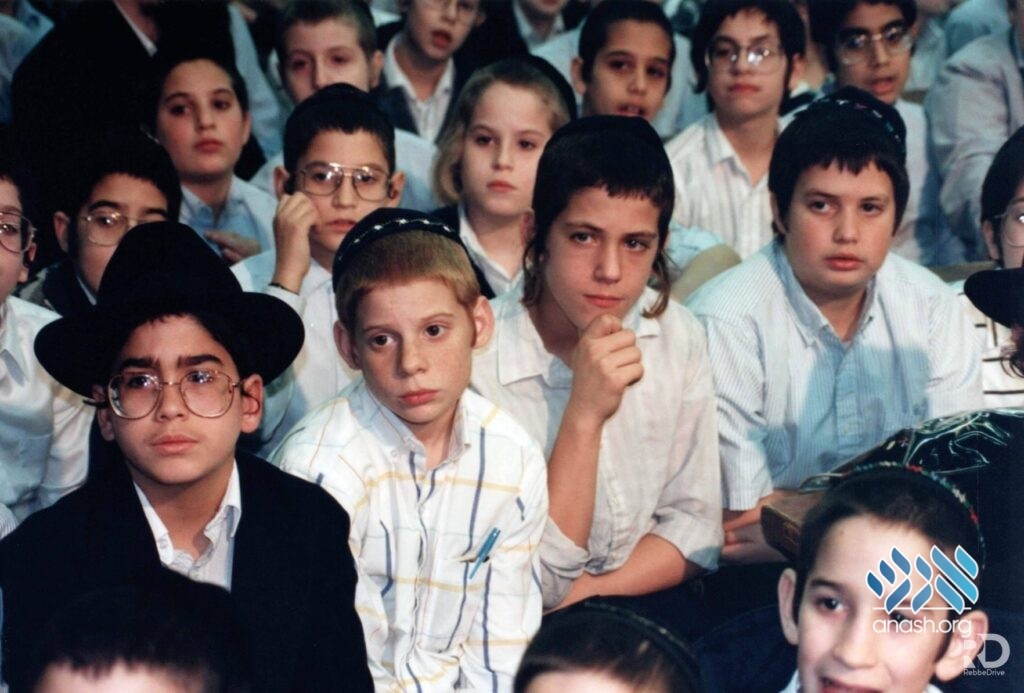From the Anash.org Inbox: For generations, Lubavitcher boys proudly wore noticeable peyos that extended to the bottom of the ear. Why should anyone be ashamed of this?
By Mendel Berkowitz
Throughout the generations, Lubavitch boys wore noticeable peyos that extended to the bottom of the ear. They carried their peyos proudly even when they were ridiculed for it.
Today, not everyone is aware of this. Young boys, some even from otherwise proud Lubavitch families, sport peyos that are barely noticeable.
One cause for this error might be the Lubavitch minhag not to grow very long peyos. This is based on the Arizal who would trim his peyos once they mixed with the beard. But the longstanding Lubavitch minhag was always to have proud peyos that extend down the cheek.
Peyos serve as an important sign of Yiddishkeit (which is why Yemenite Jews call them “simanim“). Although not halachically required, the minhag Yisroel is for peyos to extend past the minimum amount as a proud sign of being Jewish.
The Frierdiker Rebbe writes that those Yidden who are particular about their peyos develop a warmth and a love for Torah and mitzvos, whereas those who are lax about it will become cold and apathetic.
In Communist Russia, when one of the Veshedsky boys complained that his peyos stood out too much when he went outside, his father, the chossid R. Moshe Vishedsky, gently explained to him that if his peyos wouldn’t be noticeable, they would no longer be “peyos”…
There’s a famous story about R. Hillel Paritcher who held onto his peyos with mesiras nefesh as Russian officers beat his hands until he bled. He was finally saved by a local tailor who got the guards to let go, and in a miraculous story, he was rewarded to be buried next to Reb Hillel.
Let us raise our children to be proud Lubavitcher chassidim who can clearly and unquestionably be identified as such.





They are meant to be between midear to bottom of the ear. Shorter than that means you’re peyos reluctant. Longer than that means you need a haircut.
This is the appropriate length and always has been
This is the problem now? Really?
No you’re repugnance to the fellows point seems to be a problem, not necessarily the problem.
https://asktherav.com/9396-how-far-must-peyos-extend-down/
P.S. putting up a picture that shows a boy from the Heller household and one from the Twersky household is a bid deceiving since their family customs are different than most.
There are tens of boys in the pictures with normal Lubavitch peyos. Why dwell on those two?
please don’t make up hergashim see-
https://www.halacha2go.com/php/h2go/home2.php?number=690
Here is what Rabbi Braun says there
“The area of the peyos begins right above the apex of the ear at the hairline and across to the crown (the upper corner of the forehead), then back down to the bottom of the ear—these three lines creating the triangular area of the peyos.”
I got so much criticism amd slack because my sons payos didn’t look like everyone else’s. Finally someone is addressing this. Thank you!
Didn’t the Rebbe once say in Yechidus, till the end of the ear?
Can someone please comment the makor, and details. TY
This is very true! Some children and even bochurim have almost no peyos showing.
Truth to be told most do have proper peyos. It’s only a minority that doesn’t. But it’s good that you’re addressing it.
These kids from the mems (or early nuns) look very eidel.
Every boy in my sons’ classes in the mem’s and early nun’s had noticeable payos.
Donno – after Gimmel Tamuz everything got shorter – payos, kapotas, skirts. Only sheitals got longer. Why?
“not to mix the payos with the beard” can ONLY apply when you HAVE a beard.
Which most 3 to post-bar-mitzva age boys don’t. So what happened to their payos? Once the beard grows then the payos can be cut short. That’s what we were taught.
Pulling out the beard… This habit brings to chilul shabbos too.
The frierdiker rebbe had long peios kipshutoi.
The rebbe did not, but put them behined the ear.
There is a common misconception that once you have a beard you can cut the peioys completely- this is actually assur!
u can cut till the bone and with a machine #2 or#3 but u don’t have to leave it entirely
see halacha books,(for example להסתפר כהלכה- a chabad book) not stomach aches and for chassidish purposes see this link to this yuman 1st paragraph on page four
https://drive.google.com/file/d/1-9Yizo4tSeE2NxN7Rgw6Um3Jnvcr6Uu3/view
In the famous farbrengen of Simchas Torah 5715, the Rebbe mentions parents who try to make the peyos smaller and less obvious.
Here are the Rebbe’s own words as printed in Sichos Kodesh page נב:
“אויף אידן שטייט דאך “מלמד שהיו ישראל מצוינים שם” “שלא שינו את שמם לשונם ולבושם”, און צום סוף האם מען אין זיך ניט קיין תוקף און מען זוכט אלע תחבולות אבי עס זאל ניט זיין קענטיק אויפ’ן קינד אז ער איז א איד. האס ער פיאות פארקאטשעט מען אים די פיאות, אויב מען קאן ניט אפשערן אינגאנצן…
דארפן דארף זיין אז בשעת א אידישער אינגל גייט אין גאס דארף פון מיילן ווייט זיין קאנטיק אז עס גייט א איד, ווארום ישראל איז א שם המעלה ולבסוף שעמט מען זיך גאר דערמיט!
Thank you very much for bringing an extra makor
I just want to be moyisif that this doesn’t mean that it should be till the bottom of your mouth because by then the vort of the Arizal is none existent but Al lol ponim to have a yidishe tzior kefi ration nesiei Chabad!
There is a letter to a family in South Africa who’s son was wild, the Rebbe answer was to grow his payos long. Whenever his payos we’re long they had no issues but when it was trimmed too short he would be wild again.
מקור???
Having till the ear adds to the Tziur and makes it more Nikor that your a Yid